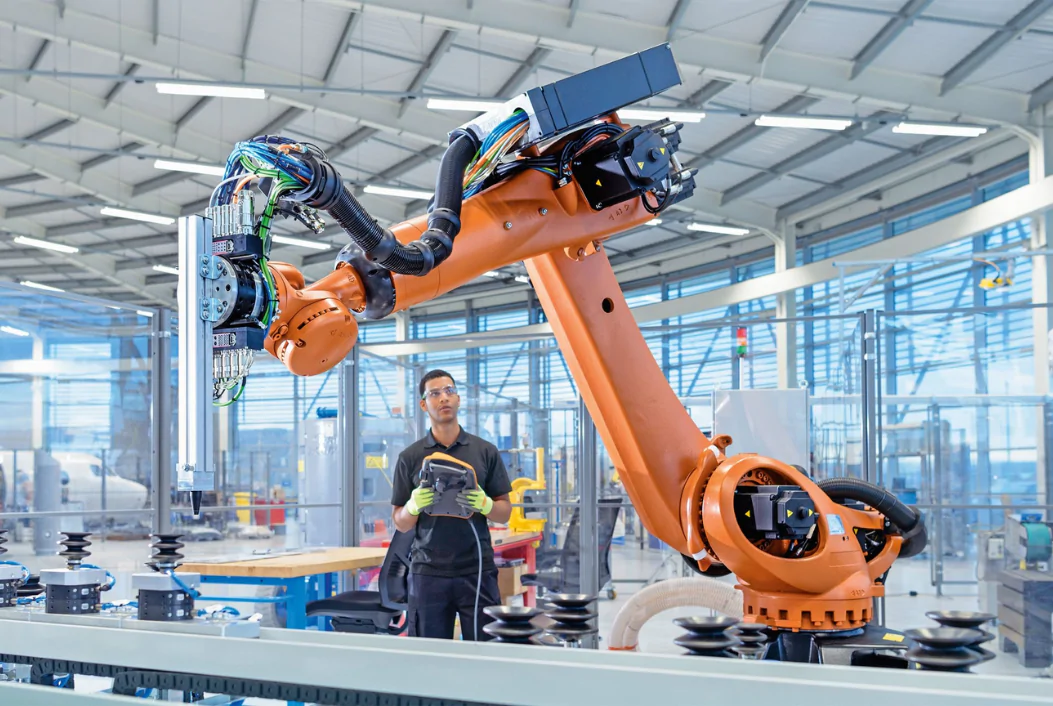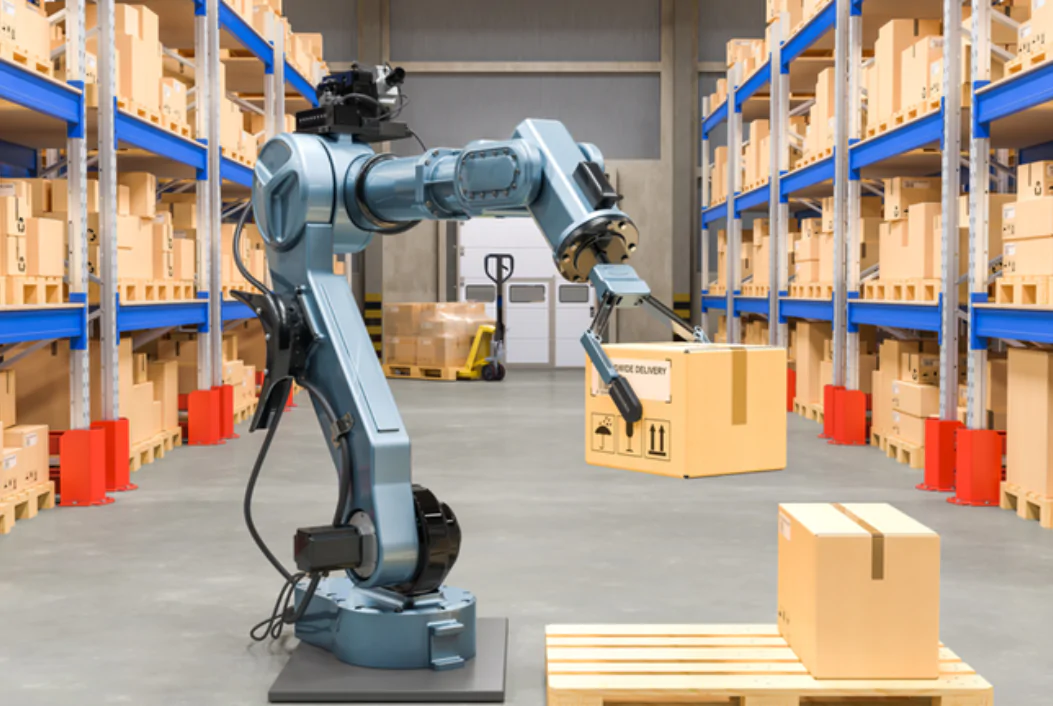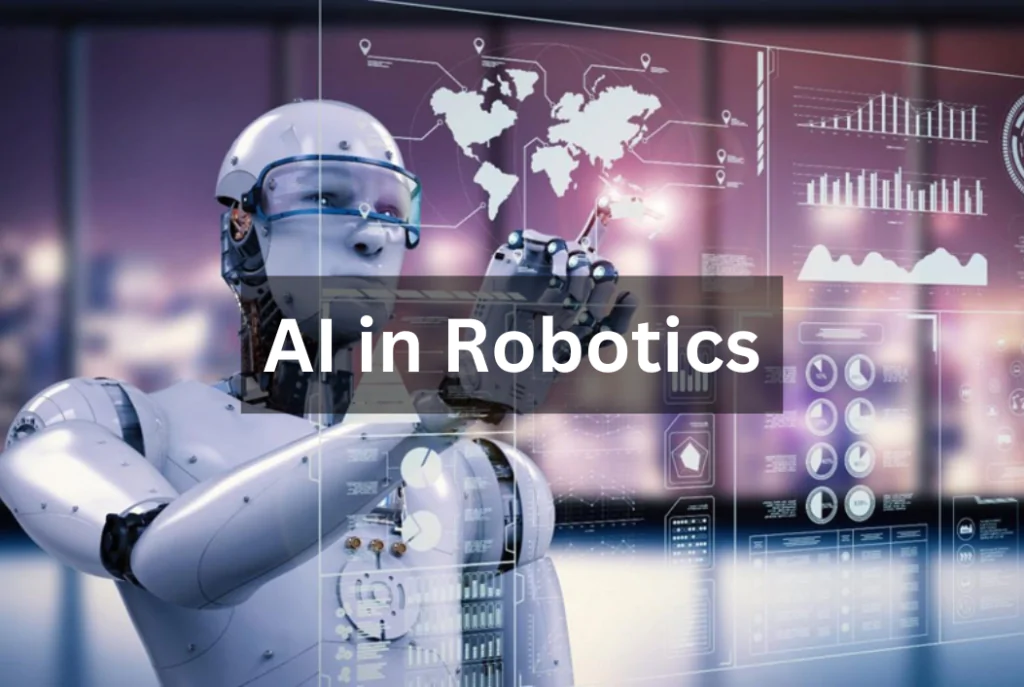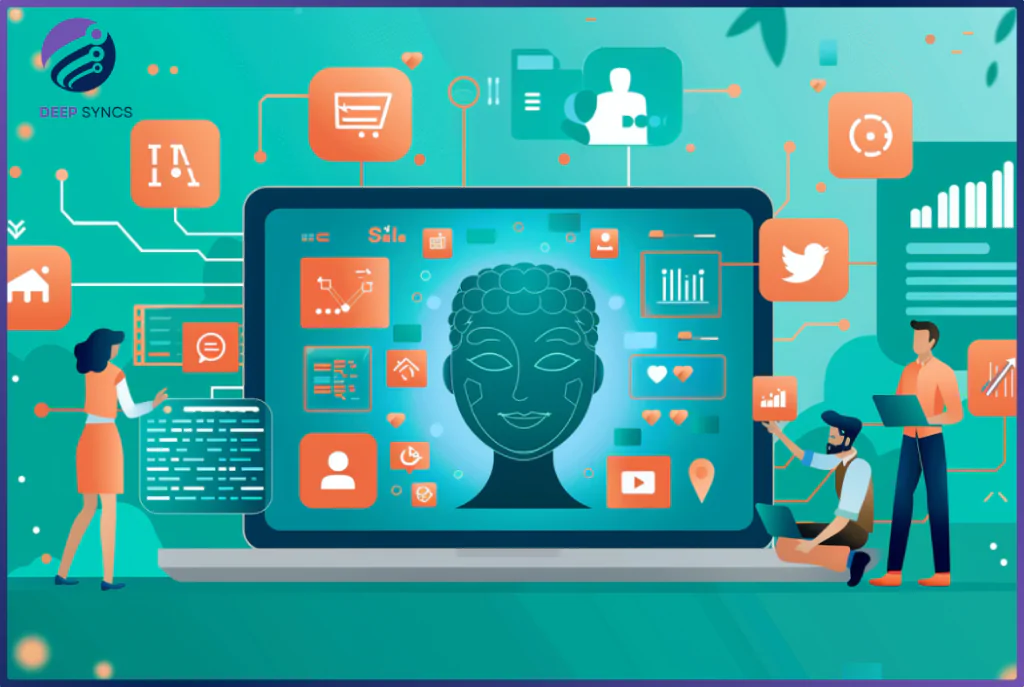Introduction
In an era characterized by rapid technological advancements, AI in robotics stands as a beacon of innovation, ushering in a new wave of smart automation. The fusion of artificial intelligence with robotics is transforming industries, redefining productivity, and setting the stage for an automated future. This comprehensive exploration delves into how AI is bridging the gap to smart automation, enhancing capabilities, and driving unprecedented efficiencies across various sectors.
The Evolution of Robotics: From Simple Machines to Intelligent Systems
Robotics has come a long way since its inception. Initially, robots were simple machines designed to perform repetitive tasks with precision. Today, they have evolved into intelligent systems capable of complex decision-making and autonomous operations. This transformation has been driven largely by advancements in AI, which imbue robots with the ability to learn, adapt, and function in dynamic environments. The journey from basic automation to sophisticated, AI-driven robotics highlights the relentless pursuit of innovation and efficiency.
Defining AI in Robotics: What Sets It Apart?
AI in robotics is distinguished by its ability to mimic cognitive functions such as learning and problem-solving. Unlike traditional robots that follow pre-programmed instructions, AI-enabled robots can interpret data, recognize patterns, and make informed decisions. This capability sets AI-driven robotics apart, allowing for greater flexibility and adaptability in various applications. By integrating machine learning, natural language processing, and computer vision, AI transforms robots into versatile tools that can tackle complex tasks with minimal human intervention.
Understanding the Basics of AI in Robotics
The Core Components of AI in Robotics
AI in robotics relies on several core components that work in concert to enable intelligent behavior. These include algorithms for machine learning, systems for natural language processing, and frameworks for computer vision. Together, these elements empower robots to perceive their environment, process information, and act autonomously. The integration of these technologies forms the backbone of modern robotic systems, enhancing their functionality and efficiency.
Machine Learning and Robotics: A Symbiotic Relationship
Machine learning is a cornerstone of AI in robotics, enabling robots to improve their performance over time. Through iterative processes, robots learn from data, refining their algorithms to enhance accuracy and efficiency. This symbiotic relationship between machine learning and robotics fosters continuous improvement, allowing robots to adapt to new challenges and optimize their operations. The result is a dynamic system capable of evolving and responding to the ever-changing demands of its environment.
The Role of Computer Vision in Robotic Systems
Computer vision plays a critical role in robotic systems, providing the means for robots to interpret visual information. By analyzing images and video feeds, robots can identify objects, navigate spaces, and perform intricate tasks with precision. This capability is essential for applications ranging from industrial automation to autonomous vehicles, where accurate perception of the environment is crucial. The advancements in computer vision technology have significantly enhanced the capabilities of AI-driven robots, making them more effective and versatile.
Historical Perspective
Early Developments in Robotics and AI Integration
The integration of AI into robotics can be traced back to early experiments in artificial intelligence and machine learning. Pioneering researchers explored the potential of combining these technologies to create more intelligent and capable machines. These early efforts laid the groundwork for the sophisticated AI-driven robots we see today. By building on foundational concepts and refining their approaches, innovators have pushed the boundaries of what is possible in robotics.
Milestones in AI-Driven Robotic Innovations
Over the years, several milestones have marked the progress of AI-driven robotics. From the development of the first autonomous robots to the creation of advanced robotic systems capable of performing complex tasks, these achievements have paved the way for modern automation. Each milestone represents a significant leap forward, demonstrating the transformative power of AI in enhancing robotic capabilities. The continuous evolution of this field underscores the potential for even greater innovations in the future.
Key Technologies Driving AI in Robotics
Natural Language Processing in Human-Robot Interaction
Natural language processing (NLP) enables robots to understand and respond to human speech, facilitating more intuitive interactions. This technology is crucial for applications where seamless communication between humans and robots is essential. By leveraging NLP, robots can follow verbal instructions, engage in conversations, and provide valuable assistance in various settings. This capability enhances the user experience and broadens the scope of tasks that robots can perform.
Autonomous Navigation and Path Planning
Autonomous navigation and path planning are vital for robots operating in dynamic environments. These technologies allow robots to move independently, avoiding obstacles and optimizing their routes. By using sensors and algorithms, robots can navigate complex spaces, ensuring efficient and safe operations. This capability is particularly important for applications such as warehouse management, where autonomous robots streamline logistics and improve operational efficiency.
Sensor Fusion: Enhancing Robotic Perception
Sensor fusion involves combining data from multiple sensors to create a comprehensive understanding of the environment. This approach enhances robotic perception, enabling more accurate and reliable operations. By integrating information from various sources, robots can make better-informed decisions and perform tasks with greater precision. Sensor fusion is a key technology driving advancements in AI-driven robotics, contributing to their overall effectiveness and versatility.
Applications of AI in Robotics
AI in Industrial Automation: Revolutionizing Manufacturing
In the manufacturing sector, AI in robotics is revolutionizing processes and boosting productivity. AI-driven robots perform tasks with exceptional precision and speed, reducing errors and increasing output. From assembly lines to quality control, these robots are transforming industrial operations. Their ability to work tirelessly and adapt to new tasks makes them invaluable assets in the quest for greater efficiency and cost-effectiveness.
Healthcare Robotics: AI-Enhanced Medical Assistants
Healthcare robotics, powered by AI, are enhancing patient care and improving medical procedures. These robots assist in surgeries, provide rehabilitation support, and perform routine tasks, allowing healthcare professionals to focus on more critical duties. AI-enabled robots offer precision and consistency, reducing the risk of human error and improving patient outcomes. The integration of AI in healthcare robotics represents a significant advancement in medical technology.
Agricultural Robotics: Precision Farming with AI
AI in agricultural robotics is driving the concept of precision farming, where data-driven insights optimize agricultural practices. Robots equipped with AI analyze soil conditions, monitor crop health, and manage resources efficiently. This technology enhances productivity and sustainability in farming, helping to meet the growing demand for food. By automating labor-intensive tasks, AI-driven robots free up farmers to focus on strategic decision-making.
AI in Service Robots: From Home Assistants to Hospitality
Service robots, enhanced by AI, are making significant inroads in various sectors, including home assistance and hospitality. These robots perform a range of tasks, from cleaning and maintenance to customer service. AI enables them to interact with users, learn preferences, and adapt to different environments. The deployment of AI-driven service robots improves efficiency and enhances the user experience, making everyday tasks more manageable.
Learn about more tools of AI Robotics
Benefits of AI in Robotics

Increased Efficiency and Productivity in Industries
AI-driven robotics significantly boost efficiency and productivity across industries. By automating repetitive and complex tasks, these robots free up human workers to focus on higher-value activities. The result is a more streamlined and effective workflow, leading to increased output and reduced operational costs. The ability of AI to optimize processes and improve accuracy further amplifies these benefits.
Enhanced Accuracy and Precision in Operations
One of the standout advantages of AI in robotics is the enhanced accuracy and precision it brings to operations. AI algorithms enable robots to perform tasks with a high degree of exactness, minimizing errors and improving quality. This precision is critical in sectors such as manufacturing and healthcare, where even minor mistakes can have significant consequences. AI-driven robots ensure consistent and reliable performance, setting new standards for operational excellence.
Cost Savings and Return on Investment
The implementation of AI in robotics leads to substantial cost savings and a high return on investment. By automating tasks and improving efficiency, businesses can reduce labor costs and minimize waste. The initial investment in AI-driven robotics is offset by the long-term savings and increased profitability. Moreover, the ability to scale operations and respond quickly to market changes provides a competitive edge, enhancing overall business performance.
Improved Safety and Risk Management
AI-driven robots improve safety and risk management in various settings. By taking on hazardous tasks, these robots reduce the risk of injuries to human workers. In industries such as construction and manufacturing, AI-enabled robots handle dangerous materials and operate in challenging environments, ensuring a safer workplace. Additionally, the predictive capabilities of AI help identify potential risks and implement preventive measures, further enhancing safety.
Challenges and Limitations
Technical Hurdles in AI-Robotic Integration
Despite the significant advancements, the integration of AI in robotics faces several technical challenges. These include the complexity of developing sophisticated algorithms, the need for high-quality data, and the limitations of current sensor technologies. Overcoming these hurdles requires continuous research and innovation. Addressing these challenges is crucial for unlocking the full potential of AI-driven robotics and achieving seamless integration.
Ethical Considerations and AI in Robotics
The deployment of AI in robotics raises important ethical considerations. Issues such as privacy, data security, and the potential for biased algorithms need to be carefully addressed. Ensuring that AI-driven robots operate transparently and ethically is essential for gaining public trust and acceptance. Developing robust ethical frameworks and regulatory guidelines will help navigate these challenges and promote responsible use of AI in robotics.
Addressing Job Displacement Concerns
The rise of AI-driven robotics has sparked concerns about job displacement and its impact on the workforce. While automation can lead to the loss of certain jobs, it also creates new opportunities and demands for different skill sets. Addressing these concerns involves fostering a culture of continuous learning and skill development. By preparing the workforce for the evolving job landscape, we can mitigate the negative impacts of automation and harness its benefits.
Case Studies
Success Stories: AI in Automotive Manufacturing

AI-driven robotics have achieved remarkable success in automotive manufacturing. Robots equipped with AI perform tasks such as assembly, welding, and quality inspection with unmatched precision and speed. These advancements have streamlined production processes, reduced costs, and improved product quality. The success of AI in automotive manufacturing serves as a testament to its transformative potential.
AI-Driven Robotics in Warehouse Management

In warehouse management, AI-driven robotics are revolutionizing logistics and supply chain operations. Robots automate tasks such as picking, packing, and sorting, enhancing efficiency and accuracy. The integration of AI enables real-time inventory management and predictive analytics, optimizing the entire supply chain. These innovations have led to significant cost savings and improved customer satisfaction.
Medical Robotics: Breakthroughs and Innovations

Medical robotics, powered by AI, are driving breakthroughs and innovations in healthcare. Robotic surgical systems enhance the precision and outcomes of complex procedures. AI-driven diagnostic tools assist in early detection and personalized treatment plans. These advancements are improving patient care, reducing recovery times, and expanding the capabilities of healthcare professionals. The continuous evolution of medical robotics promises even greater innovations in the future.
Future Trends
The Rise of Collaborative Robots (Cobots)
Collaborative robots, or cobots, represent a significant trend in AI-driven robotics. Unlike traditional robots that operate in isolation, cobots work alongside humans, enhancing productivity and safety. Equipped with AI, cobots can learn from human interactions, adapt to different tasks, and provide valuable assistance. The rise of cobots is transforming industries, enabling more efficient and flexible operations.
AI and Robotics in Smart Cities
AI and robotics are playing a pivotal role in the development of smart cities. From autonomous public transportation to intelligent waste management, these technologies are enhancing urban living. AI-driven robots provide services such as security, maintenance, and emergency response, improving the quality of life for residents. The integration of AI and robotics in smart cities is paving the way for more sustainable and efficient urban environments.
The Potential of AI-Enabled Autonomous Vehicles
AI-enabled autonomous vehicles are set to revolutionize transportation. These vehicles leverage AI for navigation, traffic management, and safety features. The potential benefits include reduced traffic congestion, lower emissions, and improved road safety. As AI technology advances, the widespread adoption of autonomous vehicles is becoming increasingly feasible, promising a transformative impact on mobility and urban planning.
The Role of Data in AI-Driven Robotics
Big Data Analytics for Intelligent Decision Making
Big data analytics is crucial for intelligent decision making in AI-driven robotics. By analyzing vast amounts of data, robots can identify patterns, make predictions, and optimize operations. The ability to process and interpret big data enhances the capabilities of AI, enabling more informed and effective actions. This integration of big data and AI is driving smarter and more responsive robotic systems.
Training AI Models: The Importance of Quality Data
The success of AI-driven robotics hinges on the quality of data used to train AI models. High-quality, diverse data sets ensure accurate learning and performance. Data preprocessing, cleansing, and augmentation are essential steps in preparing data for AI training. Ensuring the availability of quality data is critical for developing robust and reliable AI-driven robots.
Data Security and Privacy Concerns
Data security and privacy are paramount in AI-driven robotics. The collection, storage, and use of data must adhere to stringent security protocols to protect sensitive information. Addressing privacy concerns involves implementing robust encryption, access controls, and compliance with data protection regulations. Ensuring data security and privacy fosters trust and confidence in AI-driven robotic systems.
Regulatory and Ethical Implications
Governing AI and Robotics: Current Regulations
The governance of AI and robotics is guided by a framework of current regulations aimed at ensuring safety, ethics, and accountability. These regulations address issues such as data protection, transparency, and the ethical use of AI. Staying informed about regulatory developments is essential for businesses and developers to ensure compliance and responsible implementation of AI-driven robotics.
Ethical Frameworks for Responsible AI Use
Ethical frameworks for responsible AI use are crucial for guiding the development and deployment of AI-driven robotics. These frameworks address considerations such as fairness, transparency, accountability, and the impact on society. Adhering to ethical principles ensures that AI-driven robotics are developed and used in ways that benefit humanity and minimize harm.
Implementing AI in Robotics: Best Practices
Developing a Strategic Roadmap for AI Integration
Implementing AI in robotics requires a strategic roadmap that outlines the goals, processes, and resources needed for successful integration. This roadmap should consider factors such as technology selection, data management, and workforce training. A well-defined strategy ensures a smooth transition to AI-driven operations and maximizes the benefits of automation.
Choosing the Right AI Technologies for Your Needs
Selecting the right AI technologies is critical for the successful implementation of AI-driven robotics. This involves evaluating the specific needs and objectives of the business and identifying the most suitable AI solutions. Considerations include the capabilities of different AI technologies, compatibility with existing systems, and the scalability of the solution. Making informed choices ensures that the chosen AI technologies align with business goals and deliver the desired outcomes.
Training and Skill Development for Workforce Adaptation
Adapting to AI-driven robotics requires comprehensive training and skill development for the workforce. Employees need to be equipped with the knowledge and skills to work effectively alongside AI-driven robots. This includes understanding the capabilities and limitations of AI, learning to operate and maintain robotic systems, and developing new competencies for the evolving job landscape. Investing in training and skill development fosters a collaborative environment and maximizes the benefits of AI-driven automation.
Conclusion
The Future of AI in Robotics: Opportunities and Challenges
The future of AI in robotics is filled with opportunities and challenges. Advancements in AI technology promise to further enhance the capabilities of robots, driving innovation and efficiency across various sectors. However, addressing the technical, ethical, and societal challenges is crucial for realizing the full potential of AI-driven robotics. By navigating these challenges and seizing the opportunities, we can unlock new possibilities and transform industries.
Bridging the Gap to Smart Automation: Final Thoughts
AI in robotics is bridging the gap to smart automation, transforming the way we live and work. The integration of AI enhances the capabilities of robots, enabling them to perform complex tasks with precision and efficiency. As we continue to explore and innovate, the synergy between AI and robotics will pave the way for a future where smart automation is the norm. This journey requires a commitment to responsible development, ethical considerations, and continuous learning. By embracing these principles, we can harness the power of AI in robotics to create a better, more efficient world.
FAQs
Q: What is AI in robotics?
AI in robotics refers to the integration of artificial intelligence technologies, such as machine learning, natural language processing, and computer vision, into robotic systems. This enables robots to perform tasks autonomously, make decisions, and adapt to changing environments.
Q: How does AI enhance the capabilities of robots?
AI enhances robotic capabilities by allowing robots to learn from data, recognize patterns, and make informed decisions. This leads to improved accuracy, efficiency, and flexibility in performing tasks. AI-driven robots can adapt to new situations, handle complex operations, and interact more naturally with humans.
Q: What are some common applications of AI in robotics?
Common applications include industrial automation (e.g., manufacturing and assembly), healthcare (e.g., surgical robots and medical assistants), agriculture (e.g., precision farming), and service industries (e.g., home assistants and customer service robots). AI in robotics is also used in logistics, warehouse management, and autonomous vehicles.
Q: What are the benefits of using AI-driven robots in industries?
The benefits include increased efficiency and productivity, enhanced accuracy and precision, significant cost savings, and improved safety. AI-driven robots can operate continuously without fatigue, reduce human error, and handle hazardous tasks, leading to a safer work environment.
Q: What challenges does the integration of AI in robotics face?
Challenges include technical hurdles such as developing sophisticated algorithms, ensuring high-quality data, and enhancing sensor technologies. Ethical considerations, such as privacy, data security, and bias, as well as societal concerns like job displacement, also need to be addressed.
Q: How can businesses implement AI in robotics effectively?
Effective implementation involves developing a strategic roadmap, selecting appropriate AI technologies, and investing in workforce training and skill development. It is essential to evaluate business needs, ensure compatibility with existing systems, and foster a culture of continuous learning and adaptation.
Q: What is the future of AI in robotics?
The future of AI in robotics holds significant potential for further advancements and innovations. Emerging trends include the rise of collaborative robots (cobots), the integration of AI and robotics in smart cities, and the development of autonomous vehicles. Addressing technical, ethical, and societal challenges will be crucial for realizing the full potential of AI-driven robotics.
Q: Are there any ethical concerns with AI in robotics?
Yes, ethical concerns include issues related to privacy, data security, and the potential for biased algorithms. It is essential to develop ethical frameworks and regulatory guidelines to ensure responsible use of AI in robotics, maintain transparency, and protect the interests of individuals and society.
Q: How does AI-driven robotics impact job markets?
AI-driven robotics can lead to job displacement in certain sectors, as robots automate tasks previously performed by humans. However, it also creates new job opportunities and demands for different skill sets. Addressing these impacts involves promoting continuous learning, skill development, and workforce adaptation to the evolving job landscape.
Q: What role does data play in AI-driven robotics?
Data plays a crucial role in AI-driven robotics, providing the foundation for training AI models and enabling intelligent decision-making. High-quality, diverse data sets are essential for accurate learning and performance. Data security and privacy are also critical considerations to protect sensitive information and maintain trust in AI systems.
Learn more about AI Blogs and AI Tools


